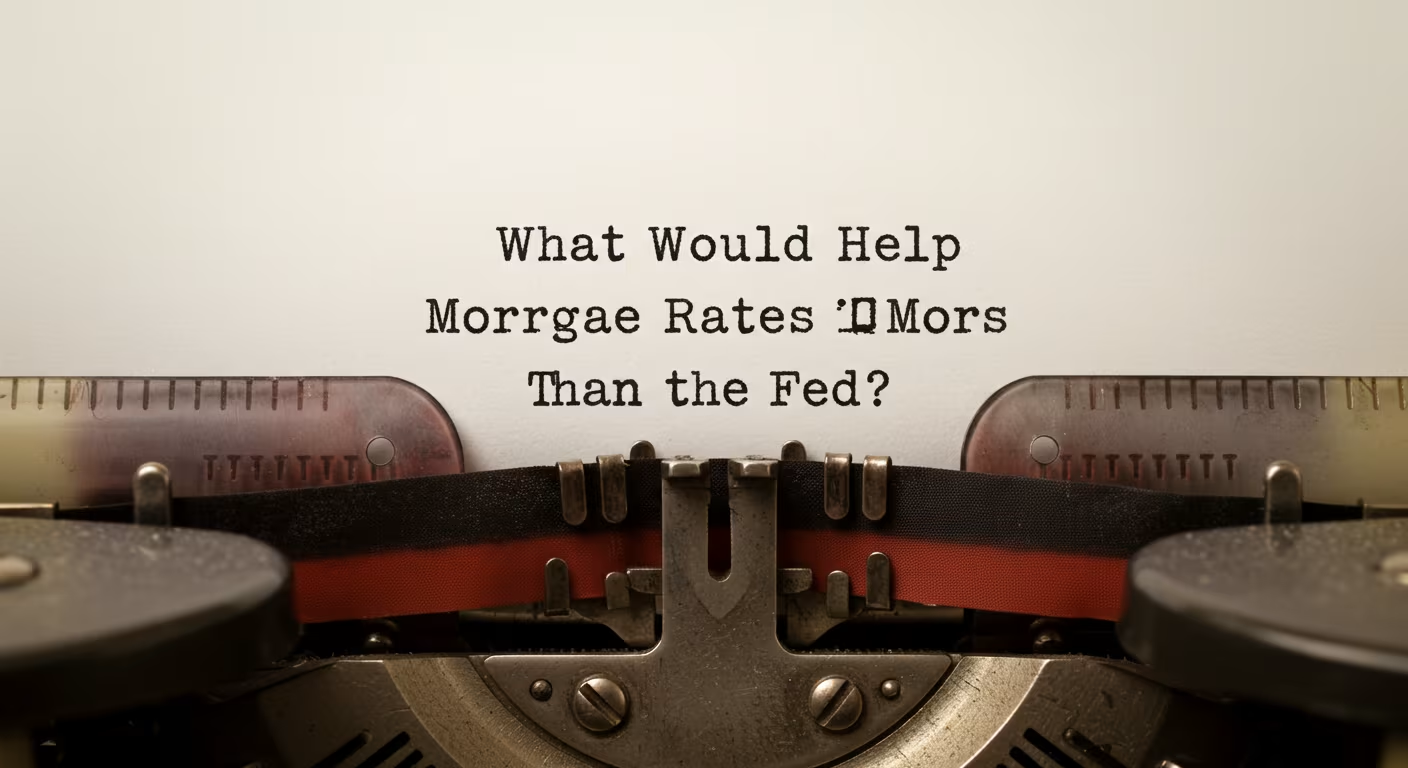Mortgage rates have become one of the most closely watched indicators in the U.S. economy—especially as homebuyers and sellers try to navigate a housing market defined by high borrowing costs and tight affordability. The Federal Reserve often dominates headlines in this context, as its monetary policy decisions influence interest rates broadly. But here’s a truth often overlooked: the Fed isn’t the only factor that can move mortgage rates.
In fact, mortgage rates can drop—or rise—independently of the Fed’s moves. Market forces, global economic shifts, bond yields, investor confidence, and supply and demand in housing finance all play key roles. So while waiting on the Fed for relief is common, understanding what else can help bring mortgage rates down is critical for buyers, sellers, and investors alike.
Here’s a deeper look into what could help mortgage rates fall even more than any single action by the Federal Reserve.
Understanding the Fed’s Limited Influence
The Federal Reserve sets the federal funds rate, which is the interest rate at which banks lend to each other overnight. It’s an important benchmark for consumer borrowing—affecting credit cards, auto loans, and short-term lending. However, mortgage rates are more closely tied to the 10-year Treasury yield, not the fed funds rate itself.
While Fed policy influences long-term rates indirectly—by affecting inflation expectations and economic outlook—it does not directly set mortgage rates. That’s why mortgage rates can sometimes fall even when the Fed holds steady or raises its benchmark rate, and vice versa.
So What Really Moves Mortgage Rates?
Several key forces affect mortgage rates outside of Fed policy:
1. Bond Market Dynamics
Mortgage-backed securities (MBS)—which bundle home loans into investment products—are bought and sold by institutional investors. When demand for MBS rises, yields drop, and mortgage rates follow suit. If global investors seek safe, long-term U.S. bonds (especially during economic uncertainty), mortgage rates tend to decline.
2. Inflation Expectations
Investors care deeply about inflation. When inflation is high or expected to rise, investors demand higher yields to compensate for diminished purchasing power. But when inflation appears under control or declining, yields fall—and so do mortgage rates.
3. Economic Outlook and Recession Fears
In times of economic slowdown or recession risk, investors flee to safer assets like Treasuries. This “flight to safety” boosts bond demand and lowers yields, bringing mortgage rates down. Sluggish growth or high unemployment data can lead to lower rates, even if the Fed stays on the sidelines.
4. Mortgage Market Liquidity and Risk Appetite
When banks and mortgage lenders have more liquidity and feel confident about borrowers’ creditworthiness, they’re more likely to offer competitive rates. If credit conditions tighten, lenders demand a higher risk premium—leading to higher mortgage rates, regardless of what the Fed does.
5. Government Policy and Market Intervention
Entities like Fannie Mae and Freddie Mac play major roles in setting the tone for mortgage rates. If they ease lending standards, expand purchasing programs, or reduce guarantee fees, lenders may pass on savings to borrowers. Additionally, government programs to stimulate home buying can influence rate trends.
6. Global Markets and Geopolitical Events
The global nature of finance means that events far beyond U.S. borders can shape domestic rates. A financial crisis abroad, a major geopolitical conflict, or central bank moves by other nations can all affect demand for U.S. Treasuries and mortgage-backed securities—indirectly moving American mortgage rates.
What Could Help Mortgage Rates Fall in 2024?
Looking forward, several realistic scenarios could help bring mortgage rates down faster or more effectively than relying solely on the Fed:
1. Continued Decline in Inflation
If inflation continues to slow steadily, investor confidence in long-term bonds will increase. Lower inflation reduces uncertainty, eases wage pressure, and encourages long-term investment. This could naturally pull down yields and mortgage rates, even without Fed rate cuts.
2. A Softening Labor Market
Strong employment has supported consumer spending and delayed a full-blown economic slowdown. If hiring cools or unemployment ticks up modestly, recession concerns may grow, prompting bond-buying activity that lowers yields and mortgage rates.
3. A Global Risk-Off Environment
Tensions abroad, stock market volatility, or instability in emerging markets often prompt global capital to flow into U.S. bonds as a safe haven. This demand can drive mortgage rates down independent of domestic Fed policy.
4. Regulatory Reforms and Lending Programs
If Fannie Mae, Freddie Mac, or other federal housing agencies introduce reforms aimed at lowering mortgage insurance costs, expanding credit access, or promoting affordability, lenders could pass those savings to borrowers. These changes wouldn’t require Fed action but could affect rates and terms.
5. Shift in Market Sentiment
Sometimes, perception is just as powerful as policy. If investors broadly believe that the economy is stabilizing or that rate cuts are on the horizon, they may act preemptively—driving down yields before any actual changes occur. This sentiment-driven behavior can move rates ahead of the Fed.
Why Lower Rates Alone Won’t Fix Affordability
Even if mortgage rates fall by a full percentage point, that alone won’t restore affordability to the housing market. Today’s home prices remain historically high, and the lack of housing supply is a deeper issue.
For instance, a drop in mortgage rates from 7% to 6% could reduce monthly payments on a $400,000 loan by roughly $250. That helps—but it won’t solve the underlying mismatch between incomes, home prices, and inventory.
Therefore, rate relief must be paired with expanded housing supply, zoning reform, and construction incentives to truly address the affordability crisis.
What Should Buyers Do in the Meantime?
For homebuyers trying to navigate this uncertain environment, here are some practical steps:
- Stay informed on economic data, especially inflation and employment reports
- Shop rates across multiple lenders—small differences can mean big savings
- Consider rate locks or adjustable-rate mortgages (ARMs) if appropriate for your timeline
- Monitor MBS and Treasury trends, which offer clues about mortgage rate direction
- Be patient and strategic, especially in overheated or overpriced markets
Remember, timing the bottom of the mortgage market is nearly impossible. But being prepared and understanding the mechanics of rate movements gives you an edge.
The Fed Matters—But It’s Not Everything
The Federal Reserve has a powerful influence over interest rates, but it’s far from the only player in the mortgage market. Bond yields, inflation trends, global demand for safe assets, and domestic housing policy all play critical roles in determining where mortgage rates go next.
If you’re waiting for rates to fall before buying a home, don’t just watch the Fed—watch the broader market signals, too. In some cases, these forces may deliver rate relief faster and more meaningfully than central bank decisions alone.
Understanding the full picture of what drives mortgage rates can help you make smarter, more confident decisions—whether you’re buying your first home, refinancing, or investing in real estate.





